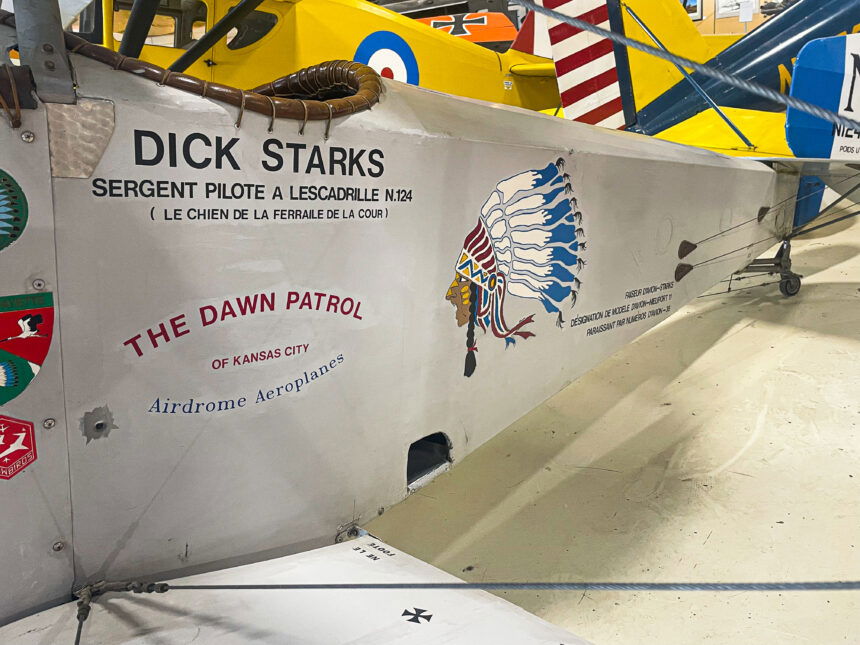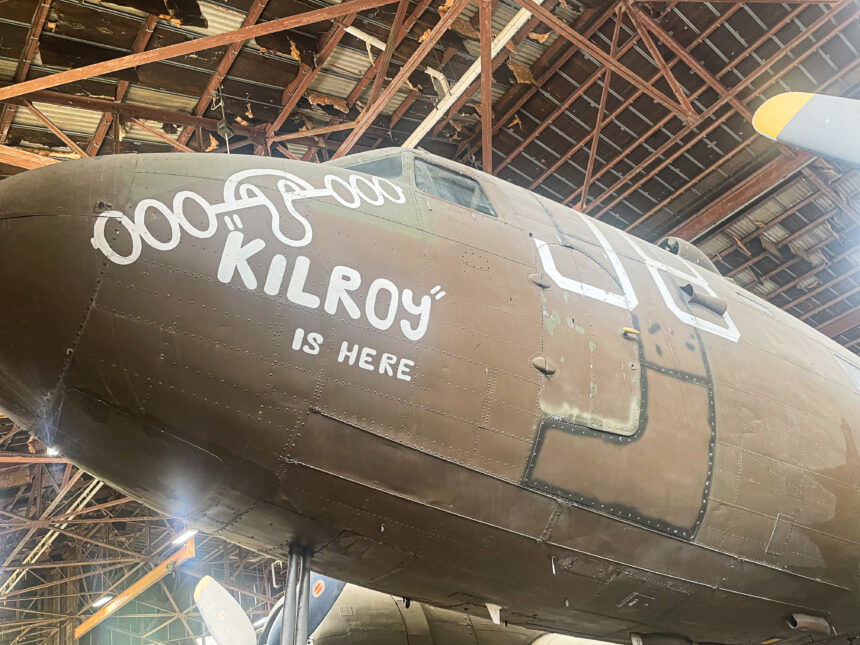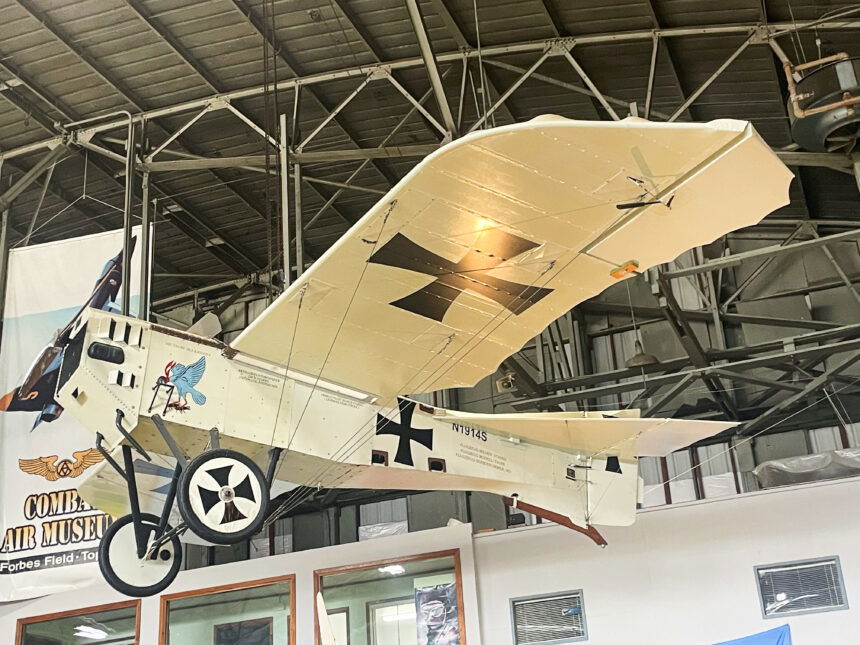Keep your nose up, with art




If you love history, we are seeking sponsors and or contributors to support this column. Contact Bob at robertmford@aol.com for details and/or contribute via Venmo @bobfordshistory.
No, we are not talking about your 14-year-old granddaughter wanting a new nose ring. We are describing what motivates a combat air crew through difficult times in war!
“Nose Art” is the term widely used to describe the illustrations drawn mostly on the front or nose of an aircraft that was “goin' to war.” These designs would create a sense of identity and camaraderie for the pilot and his crew. World War II is considered the “golden age” of nose art by those in the know.
For centuries, combatants have adorned their weapons, shields, clothes and selves with symbols, shapes or messages that personalized the fight, motivating and reminding them of their dedication.
During World War II, the United States Army Air Forces, the predecessor to the U.S. Air Force, was the only branch that allowed overt nose art. The Navy and Marines, it seemed, lacked the understanding concerning the importance of team expression or having any sense of humor at all. A little homespun fun from the deadly reason men were on these planes in the first place, seems to me, would be a team binder and morale booster.
Millions of U.S. civilians left a society based on individualism and are now suddenly thrown into a world of conformity and unity, which would be quite a shock. Any means of conveying one's personality would help the normal “trying to cope” recruit, by bucking, just a little, the rigid military system.
In dogfights through WWI, insignias were needed to tell the good guys from the bad.
“Many volunteer American pilots who joined the World War before 1917 were in the Lafayette Escadrille squadron fighting alongside the French. Their all-American symbol plastered on the side of each plane was a Seminole Indian Chiefdom looking menacing in a full headdress,” so states Kevin Drewelow, Director of the Combat Air Museum in Topeka. Kevin’s Museum has a replica 1916 Bi-Winged French Nieuport, with the Chief’s insignia, on the fuselage.
Most WWII nose art, in an airman's world, illustrated a revealing “what we were fighting for,” sketch. Which meant these young men/boys had salacious women in various poses expressing suggestive phrases while delivering death and destruction, Lucky Lady, Heavenly Body, Kentucky Virgin, Fertile Myrtle, Hell Cat and of course Memphis Belle.
In 1940, Argentinian Alberto Vargas introduced the “Vargas Girls,” risqué Esquire magazine published these scantily clad vixens … perfect timing! Hundreds of aircraft noses suddenly had alluring ladies sitting on bombs like riding a horse, seductively delivering devastation.
Then there were the specific pin-up Hollywood stars men dreamed about that dotted fuselages, again, “our dream girls we are fighting for,” Betty Grable, Rita Hayward, Jane Russell and the soon-to-be TV’s Lois Lane, Noel Neill.
Not all planes featured the opposite sex; some were just clever, Gone with the Wind, Special Delivery, We Never Miss, Sentimental Journey, My Ach’en Back and Section 8.
Along with the nose plane design, crews wore patches depicting which unit they belonged to. I’d like to meet the crew that walked around with a “Section 8” emblem on their bomber jacket; that’s my type of insignia.
There were plenty of aircraft on hand for creativity, not including fighters or transports. 12,000 B-17 and 18,000 B-24 bombers were built during the war years, with the B-24 holding the record for the largest number of a specific model manufactured.
At the beginning of World War II, Walt Disney and his creative team were on a roll. His cartoon characters had captured the imagination of America. It was no surprise when requests started coming in for Disney characters to be seen on plane noses with battle overtones.
Disney was a patriot through and through, volunteering at the age of 17 to drive transports in France at the end of WWI. On the canvas of his ambulance, Walt would doodle cartoon characters, so why not let these American boys adorn their Flying Fortresses with their favorite Disney character?
Requests kept coming, many of the Disney creators sketched the emblems themselves, 216 units wanted a Donald Duck design, 45 Pluto, 38 Goofy, 20 Dumbo, 37 Mickey Mouse and 1 Snow White for a Medical Unit. The only major Disney character not requested was poor Bambi.
“The insignia meant a lot to the men who were fighting ... I had to do it ... I owed it to them,” lamented Walt Disney.
Roy Williams, a noted Disney animator, designed the famed Flying Tiger insignia for the 14th Air Force fighting in China. Later, he became the man behind the “mouse ears” worn on “The Mickey Mouse Club,” and by millions of baby boomers.
Teeth ... fighter pilots loved shark teeth. Both Allied and Axis planes had wide open mouths covering the plane's nose with gnarly-looking teeth. Axis planes didn’t look that menacing,…we had better artists!
Throughout aviation history, nose art has gone from the whimsical to intimidating, with insignia, patches and emblems giving aircrews a feeling of brotherhood, normalcy and best of all, home.
————————————-
Bob Ford’s History will appear in each edition of the Weekender and Midweek. You can find additional work on his website, bobfordshistory.com and videos on YouTube, TikTok and Clapper.



